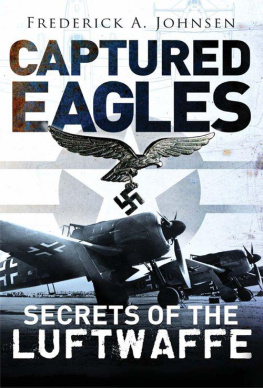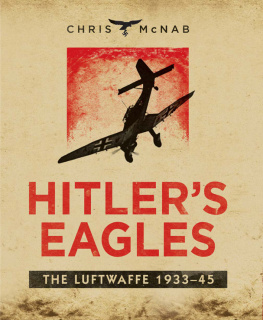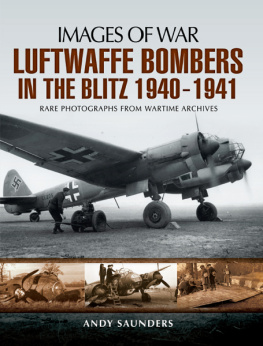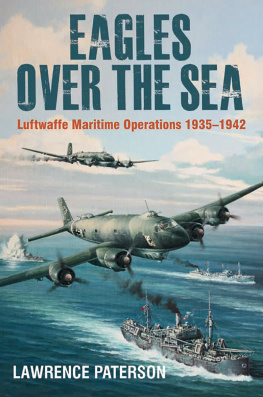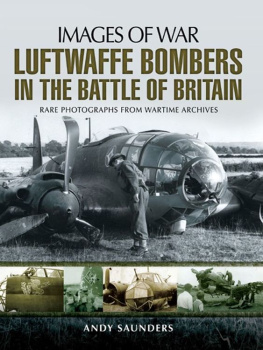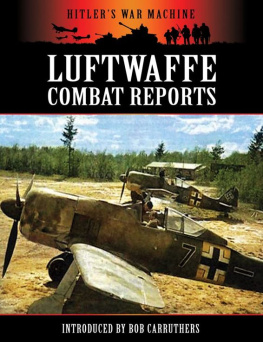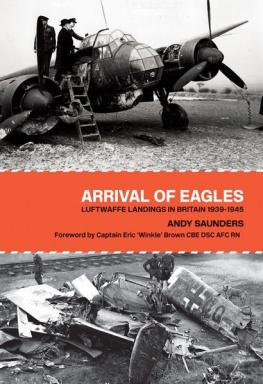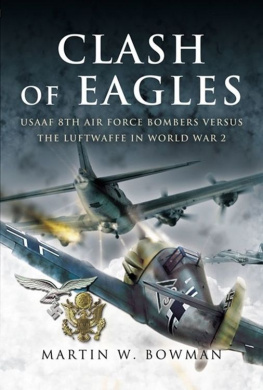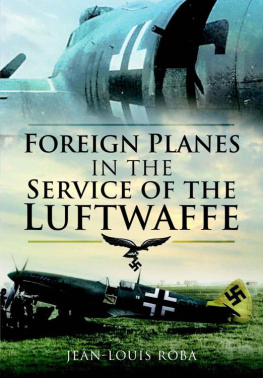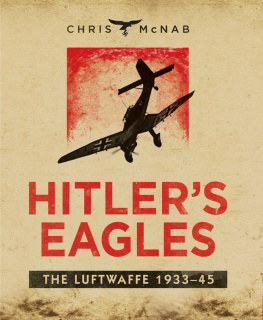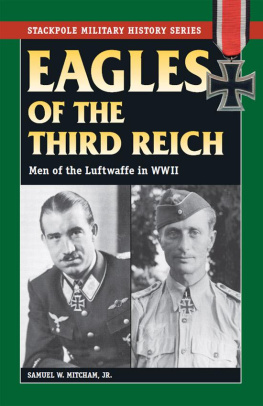CAPTURED EAGLES
S ECRETS OF THE
L UFTWAFFE
FREDERICK A. JOHNSEN
CONTENTS
FOREWORD
It is rare when a book not only covers a fascinating part of the past, but offers some critical insight for the future. A close reading of this volume will provide the reader with some useful information on why and how America gained ascendancy in the Cold War and in the space race. It also provides a basis for assessing the current state of world affairs and provokes thought on what America needs to do to maintain its place in these turbulent times.
Few subjects have enthralled the American aerospace public more than the analysis and exploitation of German technology before, during and after World War II. The amazing advances implicit in the introduction of jet fighters, guided missiles and ballistic missiles caught the imagination of US military leaders. The nation was fortunate to have General of the Air Force Henry A. Hap Arnold in a position to see and foster the need for scientific research for the future. Arnold was far from a scientist himself, and he was not well. But he knew how to select people and inspire them, and he created a framework that permitted the United States to avoid a scientific demobilization of the sort that had decimated the armed forces in the 18 months following Japans surrender. Arnolds establishment of the Army Air Forces Scientific Advisory Group (AAFSAG), chaired by Theodore von Krmn, led the way to Americas future dominance in air and space.
Arnolds initial efforts were aided by the famous Operation Paperclip. Its aim was to seek out valuable hardware and engineering data. However, at a time when the Nazi leaders of Germany were awaiting trial for their war crimes, a controversial decision was made that the personnel available in the German engineering community were too valuable to waste. Against considerable internal political opposition, the United States elected to import leading German engineers and scientists into the American research and development community. The results were far-reaching in every industry. The most evident example, seen today at every large airport, comprises the swept-wing transports crowding the tarmac. Yet for engineers still engaged in almost every field, the results are evident in the citations of the research they do on current subjects.
It is important to note, as author Frederick Johnsen does so well, that this shotgun marriage of German and American minds succeeded in large part because of the capability of the American partner. American scientists and engineers had done their homework and were gaining on the Germans. It is fair to say that had the war gone on another few years, American technology would have caught up with and then exceeded German achievements. But the pairing of the two scientific communities came at a critical time in what became known as the Cold War, and gave invaluable impetus to American efforts to counter the increasingly belligerent attitude of the Soviet Union. It should be noted that while the Soviet Union also acquired significant amounts of the same elements of German technology, it ultimately depended more upon its own intrinsic capabilities. It is not too far a reach to believe that this was a factor in the USSR losing the exhilarating race to the moon.
American interest in German aerial technology was far from new. The great champion of air power, Brig Gen Billy Mitchell, had surveyed the German aircraft industry after the Great War and directed the application of many of his findings into the tiny postwar American aviation efforts. After Adolf Hitler reestablished the Luftwaffe officially in 1935, there was intense interest in the rapid progress in which new, higher performance machines were being introduced. The United States was suffering from the Great Depression, military budgets were cut to the bone, and aviation research was grossly underfunded.
The inevitable result was that the United States Army Air Corps (USAAC) lacked planes, pilots and equipment. It was grudgingly accepted even by the press and public that both Germany and Great Britain were fielding aircraft that had a higher performance than their American equivalents. Fortunately, there were hard-working scientists in American industry and at the National Advisory Committee for Aeronautics (NACA). They remained aware of foreign developments, and in some instances paralleled them, as with Robert T. Jones investigations into the advantages of a swept wing.
Despite the funding difficulties, and despite personal obstacles such as the lack of promotion opportunity, there existed within the USAAC officers blessed with an important insight, a grasp of the scale on which the next war would be conducted. A handful of these officers created the Air War Plan Division (AWPD), which sought to establish bombing doctrine, prioritize targets and estimate the number of aircraft required. Its estimate was stunning, for it stated that more than 61,000 aircraft would be required at a time when the USAAC had about 3,000 planes.
The estimate was uncannily accurate. It led the United States to a scale of effort that was far more than anything done by Germany or Great Britain, and was matched only by the Soviet Union. Fortunately, American industry responded to the demands of the AWPD, and reached a rate of production of about 100,000 aircraft per year by 1944. In contrast, Germany, with a truly Herculean effort despite being bombed, was able to manufacture only about 40,000 aircraft in 1944. There were enormous differences, however, in the comparative support efforts training, maintenance, pilot proficiency and so on where the United States had a great advantage.
When the vast disparity in size and strength became evident in late 1943, the two opponents took different paths. The United States and its allies were determined to overwhelm German air power with great numbers of contemporary aircraft. The Luftwaffe was to be destroyed not only in aerial combat, but also by the removal of its manufacturing and training basis. Germany, in desperation, turned to a fervid attempt to win by advanced technology, hoping that weapons such as the Me 262 and the V1 and V2 would turn the tide. It was a losing strategy, but the fruits of its efforts were of vast interest to the Allies. In simplest terms, a huge quantity of good technology overwhelmed a much smaller quantity of very advanced technology.
In the ongoing 21st-century contest between established nations and shadowy terror organizations, the United States is the winner at bringing advanced technologies to bear. But there is a lesson to be learned from the historical over-reliance on high technology, and on delaying the development of such technology. One must hope the defense planners of the United States are learning from the past by planning robust capabilities against everything from terrorists, to peer states, to the threat of a cyber war that would cripple modern infrastructure. These are different threats that demand different defenses. Such diversity of defense is something Germany may not have fully appreciated on the eve of World War II.
The reader can take Frederick Johnsens look into the United States Army Air Forces (USAAFs) relationship with German technologies as a colorful and dramatic historical snapshot in time, or as a text with lessons applicable today.
Walter J. Boyne
PREFACE
There is a compelling mystique and intrigue about the World War II Luftwaffe that continues to interest readers, researchers, modelers, and, increasingly, restorers and even replicators of full-size German warplanes. This volume represents a largely American view of the Luftwaffe, ranging from captured German aircraft under evaluation in the United States to casual G.I. snapshots of abandoned Luftwaffe aircraft in Europe.
Next page
